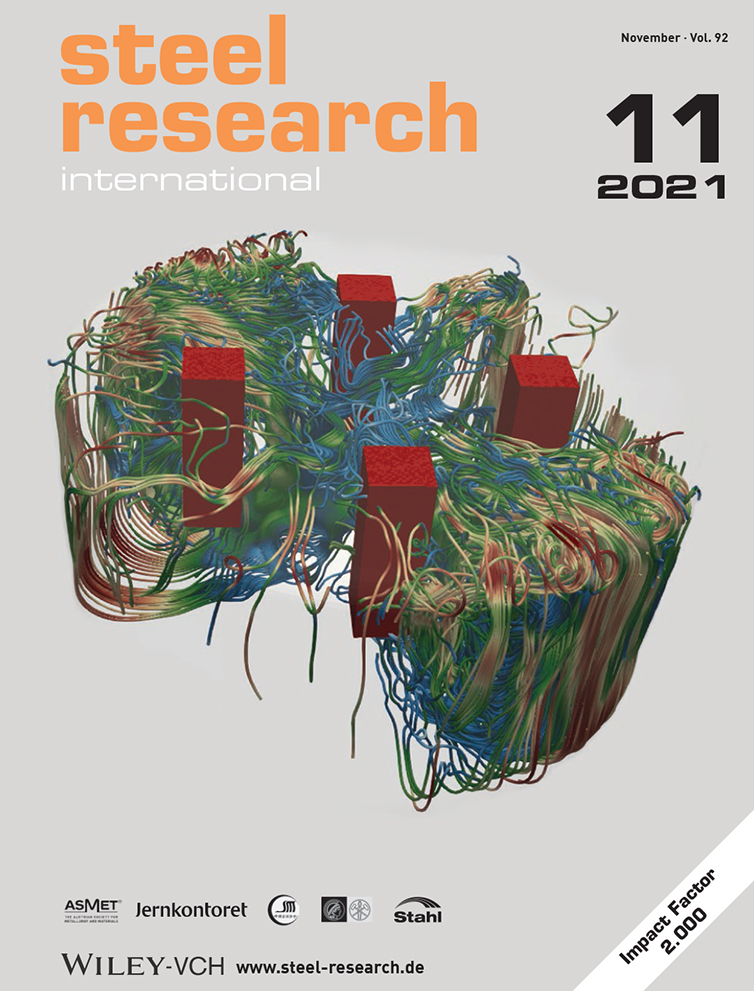Kinetics of Dephosphorization at Different Slag Basicities in the Double Slag Converter Steelmaking Process
Abstract
Combined with the temperature model from heat balance and the lime dissolution model, the dephosphorization kinetic model based on the coupled reaction model for the dephosphorization stage in the double slag converter steelmaking process is developed. Two hundred and twenty ton industrial experiments with the different end slag basicities are also conducted. The calculated values of [%P], [%C], [%Si], and slag basicities are in good agreements with the industrial experiment results at the different basicities. With the progress of dephosphorization, the rate of dephosphorization rises up rapidly at first, then drops down quickly, and increases again. With increasing basicity, the dephosphorization is promoted. When the end basicity is 2.20, the lowest P concentration is 0.0682 mass% with the highest P removal ratio of 51.63%. In the case of maintaining the other parameters to be the same values, with increasing basicity from 1.5 to 2.0, the final P concentration decreases regularly and the final P removal ratio increases from 29.66% to 56.99%. With the progress of dephosphorization, the temperature increases, the volume proportion of solid particles in slag decreases, and the mass transfer resistance in the slag decreases. Based on Pal–Einstein–Roscoe model, the calculated viscosity decreases.
Conflict of Interest
The authors declare no conflict of interest.
Open Research
Research data are not shared.




